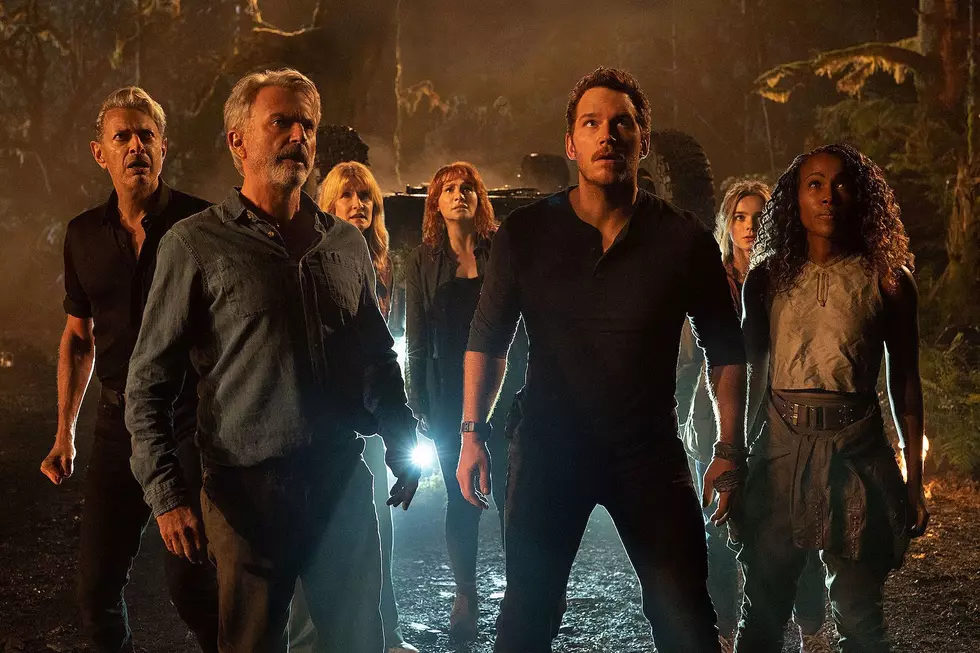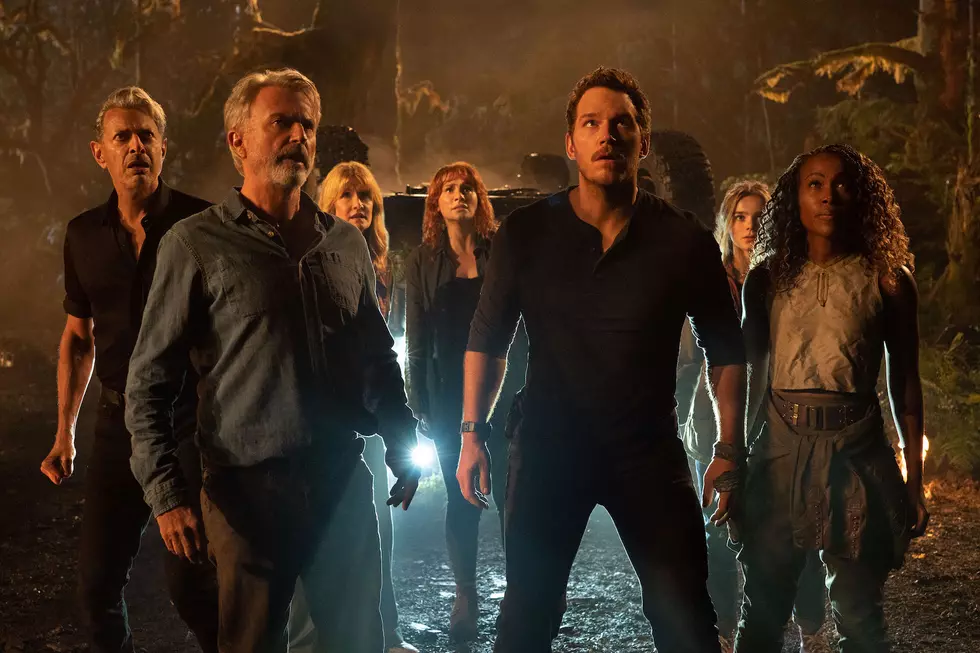
‘Jurassic Park 2 – Take 2’: ‘Jurassic World’ and the Rise of Selective Sequels
The Lost World is about to make good on its title.
When viewers head to the theater to watch Jurassic World this weekend, they’ll find a movie that transports them, almost literally, back to the first Jurassic Park. Colin Trevorrow’s new film is a sequel to Steven Spielberg’s 1993 original — and only that film. In an interview with ScreenCrush, when Trevorrow was asked about whether his movie pretended The Lost World: Jurassic Park and Jurassic Park III never happened, Trevorrow explained, “Our film is just more of a direct sequel to the original Jurassic Park.” He made a similar comment to Yahoo! Movies; he told them the earlier sequels “aren’t being written out of continuity so much as placed to the side, as they both unfolded on a different island.”
That’s both accurate and somewhat misleading. True, The Lost World and Jurassic Park III both took place on Isla Sorna, about 200 miles from Isla Nublar, the home of Jurassic Park and Jurassic World. But what Trevorrow (and, by extension, Jurassic World) doesn’t mention is the fact that both movies also conclude with scenes beyond the borders of Isla Sorna, and those scenes would make it almost impossible for Jurassic World to exist.
In The Lost World, a Tyrannosaurus Rex bound for a new Jurassic Park in San Diego breaks out of captivity and rampages through the city, killing a bunch of people and causing massive property damage. In Jurassic Park III, a pack of Pteranodons escape Isla Sorna and fly across the ocean in search of a new home. The movie ends before they arrive at their destination, but wherever they were headed, people were bound to notice (as in “Holy crap, flying dinosaurs! Run for your lives!”).
It is hard to reconcile both of those endings with the beginning of Jurassic World, with its dinosaur theme park that’s been operating successfully for years. It’s easy to accept that the events of the original Jurassic Park were covered up and kept secret from the public; they were contained to a small, obscure island off the coast of Costa Rica. But after a dinosaur creates chaos in downtown San Diego, who would invite that sort of danger into their lives by spending thousands of dollars to visit Jurassic World? How could tens of thousands of people remain so blithely unaware of the inherent risks of a dino theme park after flying lizards colonize portions of Central America? What sort of insurance company would sign off on this insanity?
The answers to those questions are “Only the richest, dumbest people,” “They couldn’t,” and “Maybe a really crazy one?” Jurassic World doesn’t just disregard its predecessors because it’s convenient; it does it because it’s essential to the internal logic of its story. It can’t exist in the same universe as The Lost World or Jurassic Park III. So regardless of Trevorrow’s wishy-washy answer, Jurassic World ostensibly writes them out of continuity (or at the very least ignores them). In doing so, it becomes the latest in a growing and troubling trend in Hollywood: the rise of what Trevorrow calls a “direct sequel,” but is probably more accurately described as a selective sequel.
A standard sequel continues all of the ongoing stories from previous films. Return of the Jedi concludes the narrative started by Star Wars and continued by The Empire Strikes Back. Star Trek IV: The Voyage Home focuses primarily on a time-traveling adventure, but it also explores the fallout of Spock’s death and resurrection in the previous two films, The Wrath of Khan and The Search For Spock. In contrast, a selective sequel picks and chooses which parts of previous continuity to use and which to discard as if they never happened.
Take, for example, Bryan Singer’s Superman Returns. Singer was a big fan of Richard Donner’s Superman and Superman II, and he designed his own movie as a sequel to just those films, which are explicitly evoked in numerous ways. The opening credits mimic the ones from Donner’s Superman, and utilize the original Superman theme by John Williams. Marlon Brando, Jor-El from the first movie (but not III or IV) makes a cameo appearance — even though he’d died two years earlier (his performance was cobbled together from outtakes from the Donner film). Meanwhile, the non-Donner movies are implicitly expunged from the canon; there’s no mention of Lana Lang (or her becoming Perry White’s secretary), or the power struggle at the Daily Planet.
Though it hasn’t opened in theaters yet, it looks like Terminator Genisys will attempt to pull a similar trick by ignoring the events of Terminator Salvation. As trailers make clear, the movie is part reboot and part sequel, and features plenty of overt homages to Terminator (like Kyle Reese going back to the past to save Sarah Connor and the line “Come with me if you want to live”) and Terminator 2 (the liquid metal T-1000 who dresses like a cop and the line “Come with me if you want to live”). But Arnold Schwarzenegger also said in an interview that Genisys works because the screenwriters “really figured out a way to continue the story and kind of ignore the last one, basically.”
James Cameron, director of the first two Terminators, went even further; in an interview with Yahoo! he said that in his mind Genisys is the unofficial “third film” in the series, suggesting this one also eliminates (if not outright contradicts) Terminator 3: Rise of the Machines. Who needs a time machine? These guys erase the past and change the future with just a couple of comments in an interview. The Terminator’s long since abandoned numerical sequels, but if it hadn’t, they could have called this one Terminator 3 2: Genisys.
There are several other recent examples, like Texas Chainsaw 3D, which pretended all the previous Texas Chainsaw sequels never happened and presented itself as a new first sequel to the Tobe Hooper classic. For all these movies the trend is the same: People loved the original movie (and occasionally the first sequel) and hated the rest. Rather than try to work with the movies people didn’t like, or reboot things entirely (a move that tends to receive a lot of negative buzz, warranted or not), selective sequels ditch the bad and focus on the good.
There is something beautiful about a franchise that can make all of its parts fit together. The Fast & Furious series treats every sequel, good and bad, as equally important, and the movies are more satisfying to longtime viewers for it. But that sort of obsessive puzzle work isn’t necessary. Note that a selective sequel is not the same thing as a sequel that overlooks all its past continuity. Pierce Brosnan’s Bond movies might have included the occasional reference to the series’ history, but they didn’t actively refer to specific events from Live and Let Die while ignoring Goldfinger. Joel Schumacher’s Batman movies made no effort to connect in an way with Tim Burton’s. In order for something to be a selective sequel it has to actively dredge up details from some past movies while actively avoiding others.
I guess an argument can be made for that approach. After all, who wants to see a direct sequel to Terminator Salvation? Not even star Christian Bale thinks that’s a good idea; he told MTV he wasn’t interested in playing John Connor again, and openly admitted his movie “just didn’t work.” Maybe it really is in everyone’s best interest to toss that whole thing on the garbage heap and start fresh.
Except selective sequels don’t start fresh. They cling, often with pathological intensity, to earlier films. It would be one thing if they simply moved on from the old and embraced the new — if they followed the example of something like Mad Max: Fury Road, which establishes its backstory with a few brief lines of voiceover and then forges its own path. Instead, they keep harping on their predecessors (or at least some of them). Jurassic World doesn’t really move forward with a new, exciting park; it constantly dredges up the memory of Spielberg’s film. One character wears a T-shirt with the Jurassic Park’s logo, a couple others wander through the ruins of the original Visitor Center. Trevorrow doesn’t just want to make a sequel to Jurassic Park, he wants to recreate it in an almost literal way. His selectivity exposes his ultimate goal: A two-hour wallow in nostalgia.
In some cases, filmmakers might try selectivity as a shortcut to simplicity, streamlining knotty continuity for casual viewers who haven’t followed a franchise down its less popular rabbit holes. But in practice, selective sequels tend to produce the opposite effect; often they’re downright confusing because they constantly distract viewers with unanswered (and unanswerable) questions about which movies matter and why.
Ultimately, it’s bad, lazy storytelling, and if it’s not necessarily a guarantee that the rest of the film will be poorly and lazily written as well, it’s certainly an ominous sign. It’s also a signal of a film’s impending irrelevance. If a franchise proves itself willing to expunge past movies whenever it feels like it, who’s to say the movie you just paid $15 to watch won’t be next? If bad movies can get erased like they never happened there’s not much incentive to make a good one. As long as the sequel makes money (and selective sequels always make money), there will be another, and another chance to revise history.
More From ScreenCrush









